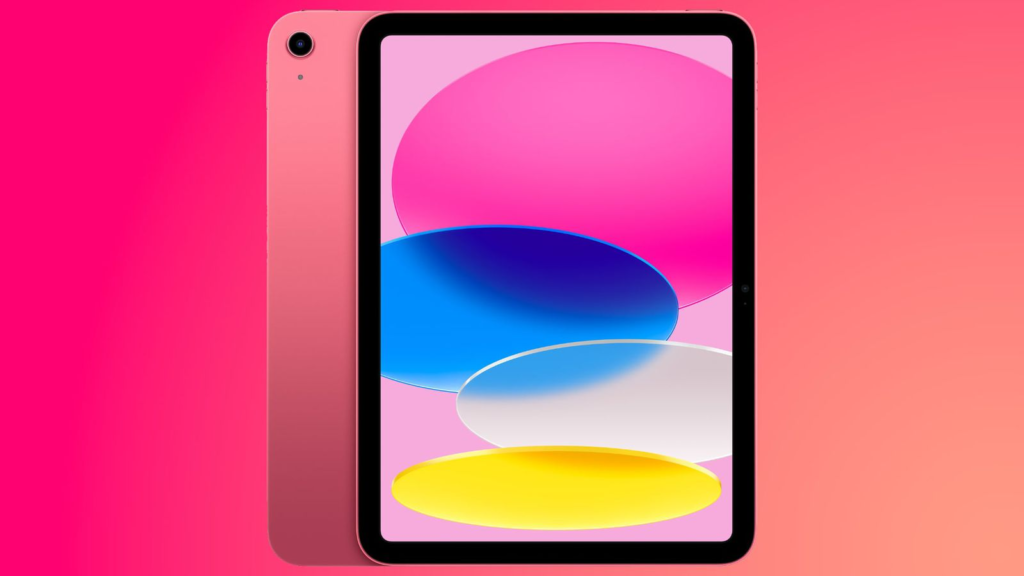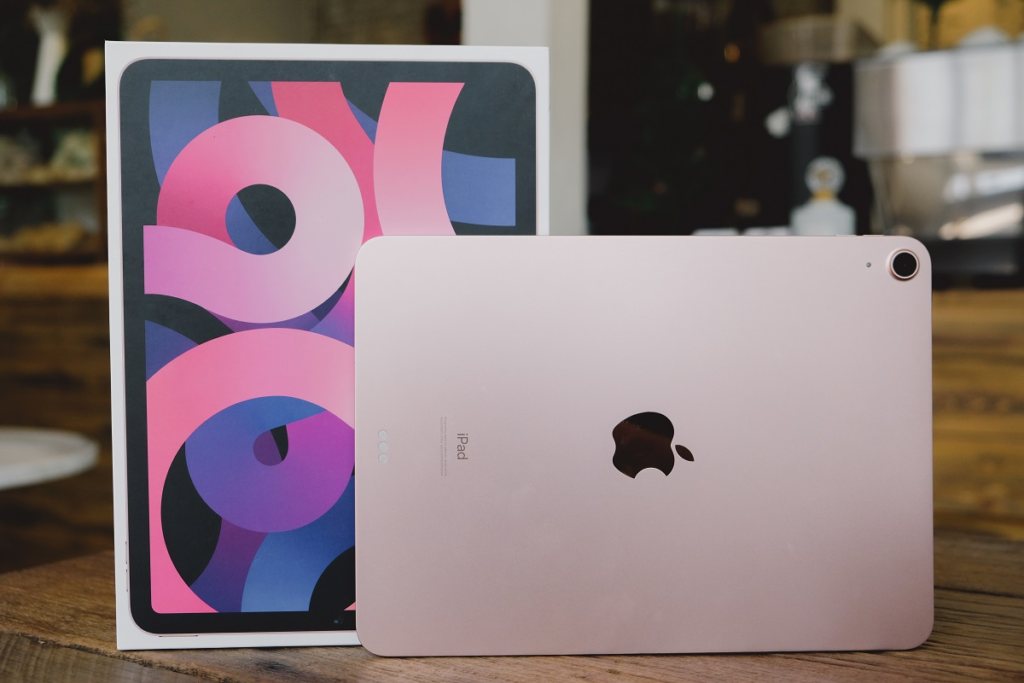In 2010, Apple’s first iPad changed the face of the tablet market. In recent years, the iPad has been seen as the epitome of a powerful, versatile, and beautiful mobile device; ranging from casual browsers to professional creatives. Through every generation, each has built from the previous generation, making for increasingly refined technology, sleeker designs, and refined performance.
Please follow us on Facebook and Twitter.
If you love tech or are wondering about what tablet to buy, understanding the evolution of this device will make you feel the path taken by Apple to revolutionize the tablet experience.

The Original iPad and Its Evolution (2010-2024)
1. The Original iPad (1st Generation) – 2010
Apple’s foray into the tablet market started on April 3, 2010, when the first generation iPad was launched. Running Apple’s A4 chip, it had a 9.7-inch display and storage options starting as low as 16GB and going up to 64GB. With a relatively bare-bones spec list, the iPad’s intuitive interface, touch-based interaction, and iOS integration ecosystem made it an immediate hit. Rear and front VGA cameras were included in the package, the ability to run the Apple Pencil was not there, but it was the perfect media consumption, browsing, and lightweight productivity tasks device.
2. iPad 2 (2011) – Enhanced Performance and Design
The iPad 2 came out just a year later, making all the improvements. The A5 processor was faster and the thin, lighter design made it quickly a favorite with users. FaceTime came with dual cameras for video chat introduced by Apple, the storage choices didn’t change but its improved design and performance made for an instant upgrade for a lot of people. Its enhanced performance and reworked design calling created a stage for future iPads, though they are better suited for a greater audience.
3. iPad 3 (2012) – Retina Display and More Power
The display was at the forefront of that third-generation iPad. With a resolution of 2048 x 1536 pixels, Apple brought its famous Retina Display to let users enjoy a clearer and more vivid visual experience. Powered by the A5X chip, which provided enormous graphical performance improvement, and with 16GB to 64GB storage options, it still supported varying uses. The Retina Display made this model especially attractive to users who care about visual clarity, but the model looked much the same as its predecessor, the iPad 2.
4. iPad 4 (2012) – Lightning Connector and A6X Chip
Just a couple of months later in 2012, Apple followed up with the fourth generation iPad, introducing the Lightning connector, a standard that would become Apple’s industry standard across their entire product line of devices. Boasting the A6X chip, the iPad 4 offered a notable increase in speed, which worked more capably when it had to multitask as well as run more intensive applications. The improved storage options on this model included 128GB for the top list offering.
5. iPad 5 (2017) – A Reimagined Budget Model
The fifth-generation iPad was launched by Apple in 2017, in a bid to provide an affordable alternative for users. The iPad 5 returned the device to more affordable pricing and more affordable iPad pricing bringing the 8MP rear camera and an updated A9 chip. It was a stripped-down version of the Pro line with fewer features but more than enough for most everyday users. It cost just $329, making it the family and student go-to choice.
6. iPad 6 (2018) – Apple Pencil Support Arrives
The iPad 6 represented a major turning point, as it brought support for Apple Pencil for the first time in the standard iPad lineup. The ability to add a link made it a better-chosen option for students, artists, and note-takers. With the A10 Fusion chip powering iPads 6 though, with that engine room powering those iPads, the pricing stayed affordable; and as a result, those iPads were ideally suited for casual and semiprofessional use.
7. iPad 7, 8, 9 (2019-2021) – Incremental Improvements
The seventh, eighth, and ninth generations continued to improve processing power, adding camera quality, and improving the storage capacity. But the A13 Bionic chip puffed out Apple’s sails by the ninth generation as it pumped up performance for heavy-duty work, such as gaming, video editing, and multitasking. Storage options expanded and the Apple Pencil was still supported, cementing that it’s a great affordable productivity tool.
8. iPad 10 (2022) – Design Overhaul and A14 Bionic Chip
Apple’s iPad 10th generation sported a smaller more modern design with slimmer bezels and the screen stretched on a larger 10.9-inch Liquid Retina display. The iPad 10 featured the A14 Bionic chip on board to power things a little faster, making it an attractive option for those on a budget looking for a little more performance. For $449, this model was where users wanted to begin their journey and the sweet spot of price to features.
iPad Pro: The Professional’s Tablet (2015-2024)
The iPad Pro line is for power users: artists, designers, video editors, and any other professional who needs a high-performing tablet.
1. iPad Pro 12.9-inch (1st Generation) – 2015
When it launched, the first iPad Pro had a 12.9-inch screen which was the largest iPad on offer. With the A9X chip powering the iPad Pro, the tablet catered to professional professionals who need desktop performance in tablet shape. The Smart Keyboard and Apple Pencil worked well together with its large display to make creative professionals the perfect device.
2. iPad Pro 9.7-inch (2016) – A More Portable Pro
The 9.7-inch iPad Pro delivered most of the power of the 12.9-inch version — only in a more stable form. It also appealed to users looking for Pro performance in a more manageable form factor, with the A9X chip, ProMotion technology, and advanced camera systems.
3. iPad Pro 3rd-5th Generation (2018-2021) – The Rise of M1 Chips
The fully redesigned 2018 version of the iPad Pro features edge-to-edge display and Face ID. When Apple released the 2021 models of iPad Pro and introduced the M1 chip, the iPad Pro’s performance took off to match Apple’s laptops. For us, the 12.9-inch Liquid Retina XDR display was a game changer for those working with HDR content.
4. iPad Pro 6th and 7th Generation (2022-2024) – Enter the M2 and M4 Chips
With the most recent iPad Pro models, the M2 and M4 chips, they were able to deliver what many consider the most incredibly powerful tablet computing experience to date. Whether you are a digital artist working with Procreate, a 4K footage editor, or a professional working on several apps at once, the iPad Pro’s amazing power and potential for something more are unlimited.
iPad Mini: Compact Yet Mighty (2012-2024)
The iPad Mini is the compact powerhouse that Apple wants to keep your hands free without compromising performance.
1. iPad Mini 1st-4th Generation (2012-2015)
When the original iPad Mini hit in 2012, it was small, with a form factor of 7.9 inches, making it the device most people were looking for when wanting portability. Gradual processing power improvements, better display quality, and better cameras earned the iPad Mini a place among casual users and frequent travelers.
2. iPad Mini 5 (2019) – A Power Boost with A12 Bionic Chip
With the A12 Bionic chip, the iPad Mini 5 got a heavy performance boost. Although the size of the pencil is small, the addition of Apple Pencil support made the pencil a lot more functional for creative tasks.
3. iPad Mini 6-7 (2021-2024) – Advanced Technology in a Small Package
The A15 Bionic and A17 Pro chips in the sixth and seventh generations of iPad Mini went solar systems. As a light to carry, the Mini offers a compact size, Liquid Retina display, and 2nd generation Apple Pencil support that makes it a popular option for note-takers, students, and those who want the power of a portable package.
iPad Air: The Perfect Middle Ground (2013-2024)
The iPad Air has helped fill a middle ground between the standard iPad and iPad Pro, where they make sense performance-wise, portable-wise, and on budget.
1. iPad Air 1st-2nd Generation (2013-2014) – Lighter and Thinner
For the first two generations devoted to iPad Air were the relatively thinner and lighter device, allowing for a more portable device while offering sizeable power. This second-generation model brought the A8X chip and anti-reflective display technology, options which make the iPad a good second-generation model to desire if you wanted a step up from the standard iPad.
2. iPad Air 3rd-5th Generation (2019-2022) – Moving Closer to Pro Territory
Coming out in 2019 with the 3rd generation device, and then the 2020 iteration of the iPad Air, the 4th generation brought major updates with a 10.5-inch display, and even included support for Apple Pencil, while closing the gap of differences between the Air and Pro models.
3. iPad Air 6th Generation (2024) – M2 Power in a Lightweight Design
The iPad Air 6, released in 2024, sealed the deal on the Air as a pretty perfect iPad if you do not need the price of the Pro models. It is powered by an M2 chip, and delivers excellent performance for professional applications, gaming, and creative work, in a lightweight and affordable package.

Which iPad is Right for You?
The iPad you choose depends on your needs. If that standard iPad is what you are after, however, it is an excellent value offering above its rather paltry price thanks to solid performance and affordability. If you are looking for a high feature consideration, but are looking to be portable, then the iPad Mini is perfect. The iPad Air makes a great middle-ground at price and performance considering you are a creative or a professional and the iPad Pro is always a great product for the power users looking for the latest and greatest technology. The iPad lineup for 2024 evolves to serve every user with a powerful mix of tools that serve productivity, creativity, and entertainment for everyone’s go, one and all.





